Το τεύχος 14 (Φεβρουάριος 1985) του έγκριτου περιοδικού Αρχαιολογία, ήταν αφιερωμένο στην Μουσική, με πλούσια και ενδιαφέρουσα θεματολογία.
Σ' αυτό το τεύχος, δημοσιεύτηκε και ένα περιεκτικό άρθρο του μακαριστού πρωτοψάλτου και διδασκάλου Λυκούργου Αγγελόπουλου, για την Βυζαντινή Μουσική.
Το παραθέτουμε στη συνέχεια, όπως και μια περίληψη του άρθρου στα αγγλικά.
ΛΥΚΟΥΡΓΟΣ ΑΓΓΕΛΟΠΟΥΛΟΣ ΓΙΑ ΤΗΝ ΒΥΖΑΝΤΙΝΗ ΜΟΥΣΙΚΗ ΣΤΟ ΠΕΡΙΟΔΙΚΟ ΑΡΧΑΙΟΛΟΓΙΑ by Panagiotis Andriopoulos on Scribd
English summary:
Byzantine music
Lykourgos A. Angelopoulos
The music chanted in the Church of the Orthodox East from the time of the Byzantine empire until today is known as Byzantine. Three extensive periods mark the historic evolution of music and hymnology. The first covers the period between the early Christian years and the foundation of Constantinople and is characterized by the oral transmission of hymns. The second reaches the 12th century and achieves a high point in the 7th and 8th centuries. During this period the kontakion and the canon are created to promote ecclesiastic poets such as Romanos the Melodos (6th century), Andreas of Crete (7th century), St. John Damaskinos and Kosmas the MeIodos (7th-8th century), Sophronios, Patriarch of Jerusalem and many others. Furthermore, a variety of other kinds of hymns appears in this phase, like the sticheron, automelon, apolytikion, etc. The system of the octave is organized and the Octoechos is coded by St. John Damaskinos. The third period commences in the 12th century and ends with the fall of Constantinople. This is the golden era of Byzantine music and exhibits a great number of famous hymnologists like Ioannis Koukouzelis, Nikephoros Ethikos, Ioannis GIykis, Xenos of Koroni, Ioannis Kladas, et al. The chanters/musicians chanting in the metropolis of Constantinople are called names denoting roles played in the chorus such as domestikos, lambadarios, protopsaltis, monophonarios, anagnostis, vastaktis, chironomos. The chironomos (a gesticulating cantor) led the choristers in the proper way of chanting. From the Fall of the ByzantIne capitaI, a new phase starts that lasts until today. The years of Turkish rule and those that follow υρ to the 19th century have fully been studied, from the historic point of view, by Manolis Hatziyakoumis in his book "xειρόγραφα έκκλησιαστικής µουσικής, 1453-1820" (= Manuscripts of Ecclesiastic Music, 1453¬1820). Byzantine music is monophonic and melodic and its signs signal the departure of the voice from the originaI vocals called "base of sound". These possess an impetus that is transmitted through the vocal practice, interpreting the written music and is a prerequisite of performing melody. Βyzantine music is, in addition, purely vocal and needs no musical instruments. The early music texts exhibit only a few signs. Βy the 12th century, a complete system is developed that is valid until today with certain alterations. The same signs recording the music texts in books have different names depending οn the sort of hymns they contain. The reading interpretation of signs is as foIlows: the starting vocal is defined and the voice moves up or down according to the Indications of the signs. Other signs signify the alterations, changes that is, from one sound to another. The so-called "κρατήµατα" are free compositions in which meaningless syllables like te-ri-rem, to-ro-ro, etc., are used instead of verses. Thus, the composer having no obligation to a certain text advances to the composition of pure music. The reformation of three major music masters (Chrysanthos, Gregorios and Chourmouzios) in the early 19th century simplified the writing and defines in detail the division of time. Αll chanted hymns, old and contemporary, were adapted to and rewritten in the new system / scheme, while in 1832 the book of Chrysanthos reveals the theoretical foundations of this system. One and a half century later, in 1982, the monumental work "Θεωρητικό "(= Οn Theory) written by Simon Karas is published. It completes through a detailed and exemplary classification the examination of the Greek music system; it corrects errors and refers thoroughly to the rhythm, the musicaI expression, the interνals, the "attractions" ; furthermore, it deals with the popular/folk music and its instruments, so that Greek music is approached and studied theoretically as an entity, while at the same time this entity is fully documented.




















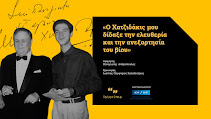



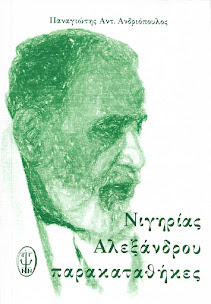


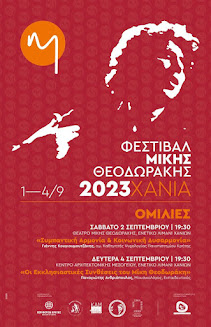


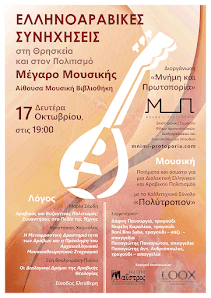



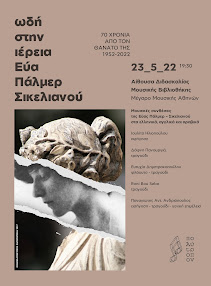









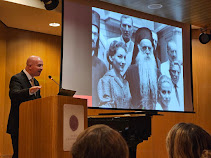
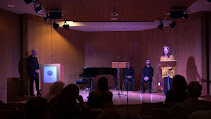




























Δεν υπάρχουν σχόλια:
Δημοσίευση σχολίου